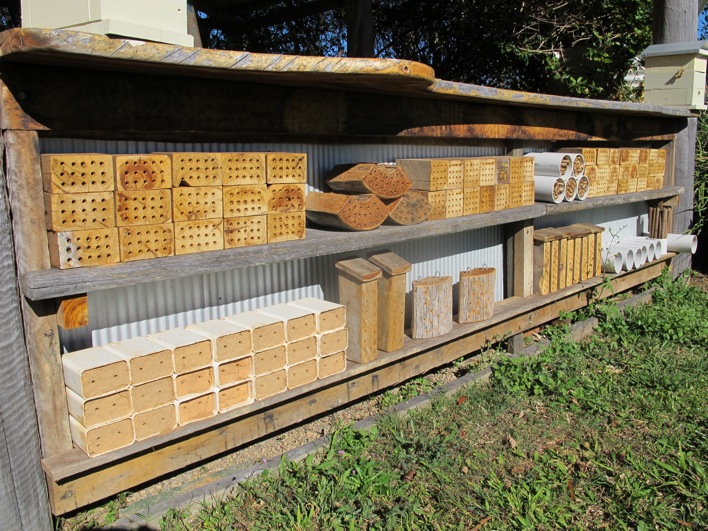At Kin Kin native bees we are also trying to build up numbers of solitary native bees by providing nesting blocks and houses to suit some of the many other bees native to this area. Solitary bees make up the vast majority of our 1500 odd native bee species and once you start looking you will be surprised just how many are in your area.
Blue-Banded Bees (Amegilla sp.)
These are very attractive bees with bands of pale blue metallic hair around their abdomen. They are one of the few native species capable of ‘buzz’ pollination and are very good at pollinating tomatoes and chillies and other plants which require vibration to release pollen. Their buzz is very loud when flying and their flight pattern is quite jerky and erratic.
The blue-banded bees below (Pictures 1 & 2) I found nesting in pizza oven I had built out of ‘cob’. Cob is simply a mix of three parts sand to one part clay. I don’t use the oven for cooking anymore as it has hundreds of blue-banded bee holes bored all around it. I am now trying to encourage the bees to also move into nesting blocks which I have made out of sections of rectangular PVC pipe filled with the ‘cob’ mix ( Picture 3 ) and simply placed around the oven (design of these blocks is credited to Les Dollin of the Australian Native Bee Research Centre).
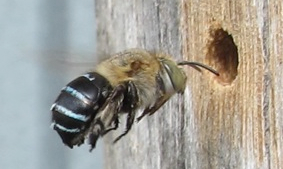
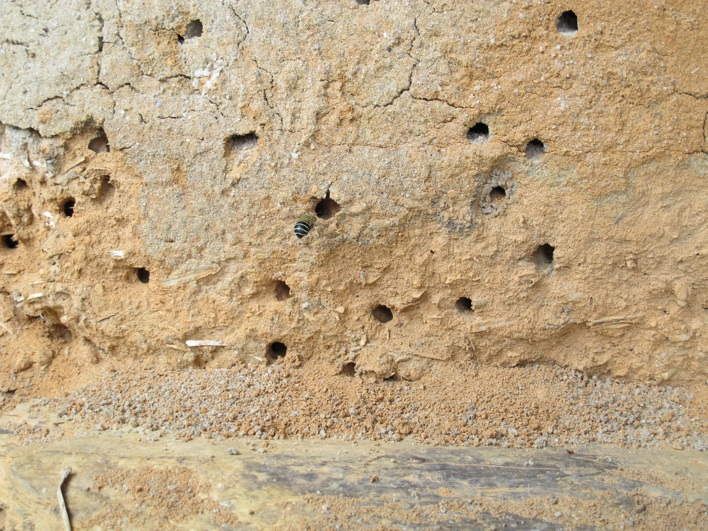
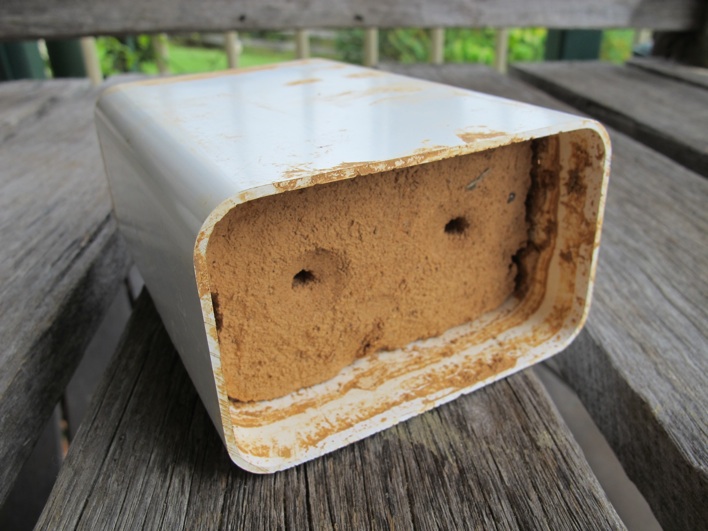
Fire-Tailed Resin Bee (Megachile mystaceana).
This is a great looking bee with a bright orange abdomen. It will nest in holes in wooden blocks and you can encourage these bees to take up residence by providing nesting blocks on your property for the bees to move into. These bees will create a series of individual compartments (between about 8 and 12) within each hole and provision each compartment with pollen and nectar before sealing the end of the hole with a mix of resin and mud.
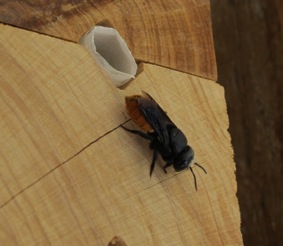
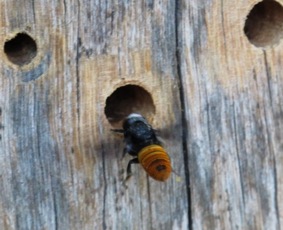
Leafcutter Bee (Megachile Sp.)
These bees will also nest in holes in timber blocks but the holes are generally slightly smaller than those of the Resin bees. As the name suggests this bee cuts circular or oval shaped pieces of leaf and uses them to line her nest. She creates individual cocoons within each nest hole and again provisions each one with pollen and nectar before laying an egg in each one.
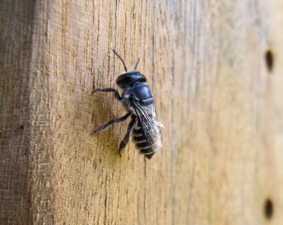
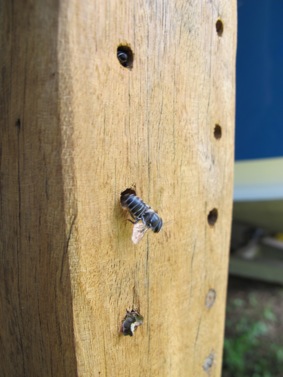
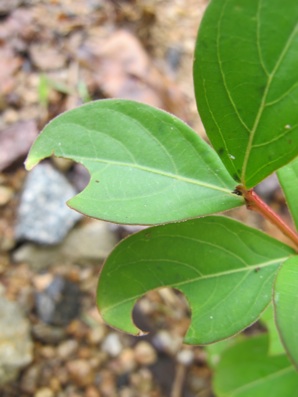
Leaf-faced Bee (Amphylaeus morosus)
Nesting naturally in dried grass tree spikes or fern fronds these bees can also be encouraged to move into artificial nests in wooden blocks. These bees can be identified by the bright yellow bars on their backs and yellow markings on the their face. The bees from this family line their nests with a cellophane like material which waterproofs the nest. They will also seal the front of the nest with this material which can help you identify who has moved in to your nesting blocks.

Bee Village
This is one of our bee villages at Kin Kin Native Bees. It is on the side of a tractor shed with the nesting block entrances facing northeast.
